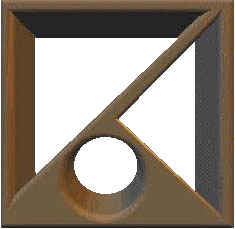Project Abstract
Product development process includes several design and testing activities requiring engineers to review, modify and test several times a project before starting the manufacturing process. Aided-design tools (CAD systems) have been developed with the aim of assisting the designers, allowing them to control aspects like dimensioning, functionalities of products and their components. Reverse Engineering systems have been recently developed with the aim of reconstructing digital models of hand made objects, or of objects which are available only physically. CAD systems are used together with tools for the analysis, simulation, and quantitative evaluation of the characteristics and of the behavior of the designed products (CAE – Computer Aided Engineering systems). The design and analysis activities are today carried out through different modalities, tools and times, and also by different users. Because of that, time necessary for the products design/analysis phases are long, and may be definitely reduced by means of optimization and integration of tools and methodologies. Besides, still today, it often happens that reviewing phases are based on analyses performed on the basis of physical prototypes. Consequently, design time is long, and the total cost of projects increases. Therefore, there is a growing interest in the development and use of digital methods and technologies which assist the product development process in an effective and efficient way, in a more and more competitive and complex industrial context. Virtual Reality (VR) and Augmented Reality (AR) techniques and technologies have been successfully used for the development of some applications in the industrial sector and in the context of product development.The objective of the research project is to use and validate the potentiality of these VR/AR technologies for improving and optimizing the design/analysis phase of a product.
The project aims at studying and developing a virtual environment named PUODARSI (Product User-Oriented Development based on Augmented Reality and interactive Simulation) which allows designers to analyze, improve and optimize the performances of existing physical products in a contextual and direct way. The environment will allow users to reconstruct the digital model of a physical object by means of reverse engineering techniques, to display in an augmented reality environment, and to modify using haptic devices, the shape of an object, and to evaluate, in a contextual and comparative way, the effect that the modifications performed over the object shape may have on the structural and fluid-dynamics properties of the object. The environment will allow users to use and manage the modules, the documents and the history of the product, by integrating the various kinds of content related to the product.
Very innovative aspect of the project is the development of an environment of augmented reality where the user can modify the shape of an object by means of the use of haptic devices with the aim of optimizing it, and at the same time and in a comparative way of evaluating the performed modifications from a structural and fluid-dynamic point of view. All these will be available by using a unique system. This consists of a main improvement from the point of view of efficiency, times, and also system usability, in respect to techniques and tools currently available.
